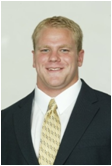
There are certain things you just have to do each day – brushing your teeth is one of them.
I first heard the analogy from an old friend of mine when discussing implementing an ACL prevention program with our soccer team and the struggles to keep the coaches on it once the season started,
“You wouldn’t brush your teeth everyday for six months and then stop for six months would you?”
Dentistry has is right.
Not just the brushing every day part, (although clearly important) but their whole approach.
You probably don’t even remember your first visit to the dentist do you? That’s my point. Dentists get you right from the get-go. You’re evaluated, x-rayed for a baseline to compare future visits to, you get picked at, poked and prodded and then they finish your visit with a cleaning, rinse and some fresh minty breath.
If you have good insurance you get to go back twice a year – Shoot, sometimes you go in and you don’t have any tooth pain at all. But isn’t this the point?
If the dentist finds tarter build up – BAM that little hook comes in and blasts that gunk right out of there. No use in letting that sit until it causes a cavity – your dentist wouldn’t be doing their job if they did.
Yet, many times (I really mean all the time) in sports medicine we see athletes and patients with poor movement patterns, dysfunctional squats, steps and lunges and we do nothing.
We wait.
Their knee doesn’t hurt yet.
No need to take a look. No baseline assessment. No poking. No prodding.
Once in a while an athlete or patient comes in on the advice from a friend – they have back pain.
“No problem. I’ll help – let’s just get some ice and e-stim on that, there, that should do the trick. See you tomorrow.”
If you went to a dentist and you had a tooth ache and they rubbed some Novocain on your gum and told you to come back the next day to do it again you’d soon find another dentist to go to. One that addressed the problem and not just the symptom, and one then that gave you some advice on how to avoid future problems.
Dentists do it right – Baseline Evaluation, Regular On-Going Assessment, Treatment/Maintenance and Education.
I remember when I was a child brushing my teeth three times a day and then if on the rare occasion I was allowed to have some ice cream or candy my mother would make me do it again!
33 years later not a single cavity.
I wish I could say the same for my back pain.
Art Horne is the Coordinator of Care and Strength & Conditioning Coach for the Men’s Basketball Team at Northeastern University, Boston MA. He can be reached at a.horne@neu.edu.






